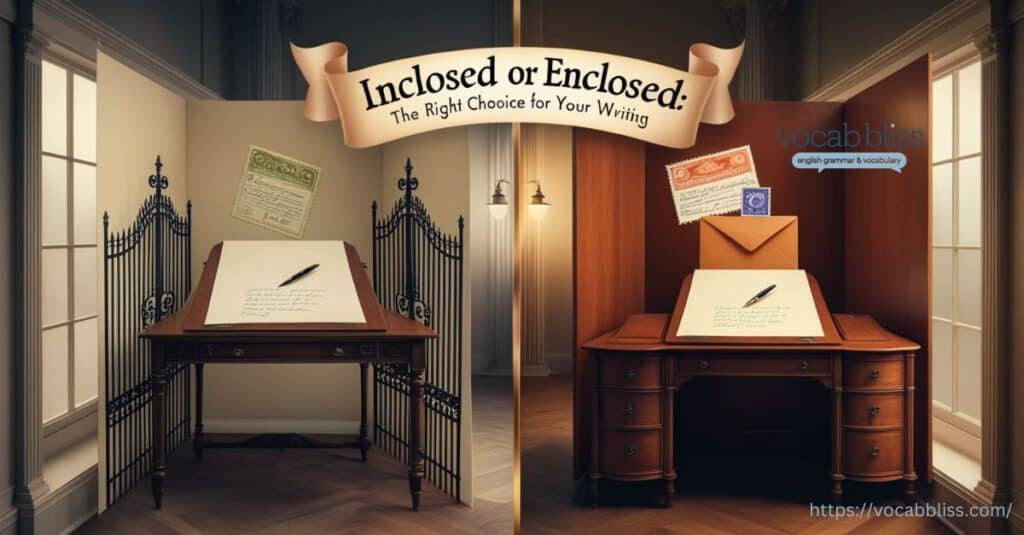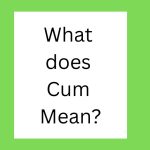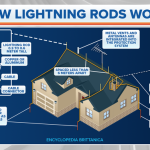Choosing the right word in writing can make a big difference, especially when it comes to formal communication. One common confusion arises with the terms inclosed or enclosed. Are they interchangeable, or does one fit better than the other? Let’s break it down and explore their definitions, usage, and how to remember which to use.
Quick Summary
The choice between inclosed or enclosed comes down to usage and relevance. While both words share the same meaning—”contained within”—enclosed is the standard spelling in modern English, widely used in business, formal writing, and everyday communication. Inclosed, on the other hand, is an outdated form primarily found in historical or legal documents. To ensure clarity and professionalism, always opt for enclosed, especially in contexts like letters, documents, and emails. Remember, enclosed is universally recognized and preferred, making it the best choice for modern writing.
Understanding the Basics
The Origin and History of inclosed or enclosed
The words enclosed or inclosed both trace their roots to the Latin verb includere, meaning “to shut in” or “confine.” This shared origin highlights their identical meanings, but their spellings diverged as English evolved.
During the 16th and 17th centuries, inclosed was a standard spelling in British English, appearing in legal texts, letters, and land-related documents. However, the English language leaned toward simplification in spelling as literacy spread. By the 18th century, spell enclosed became the preferred choice due to its easier pronunciation and consistency with similar words, like “enclose.”
Today, enclosed dominates in modern English, leaving inclosed as a relic of the past, occasionally seen in historical writings or documents.
Inclosed: Definition, Meaning, and Usage
Inclosed means “contained within” or “surrounded by something,” much like its modern counterpart, enclosed. It was once a widely accepted spelling, but it has largely fallen out of favor.
Historical Contexts of Inclosed
The spelling inclosed was commonly used in older British English texts, particularly in:
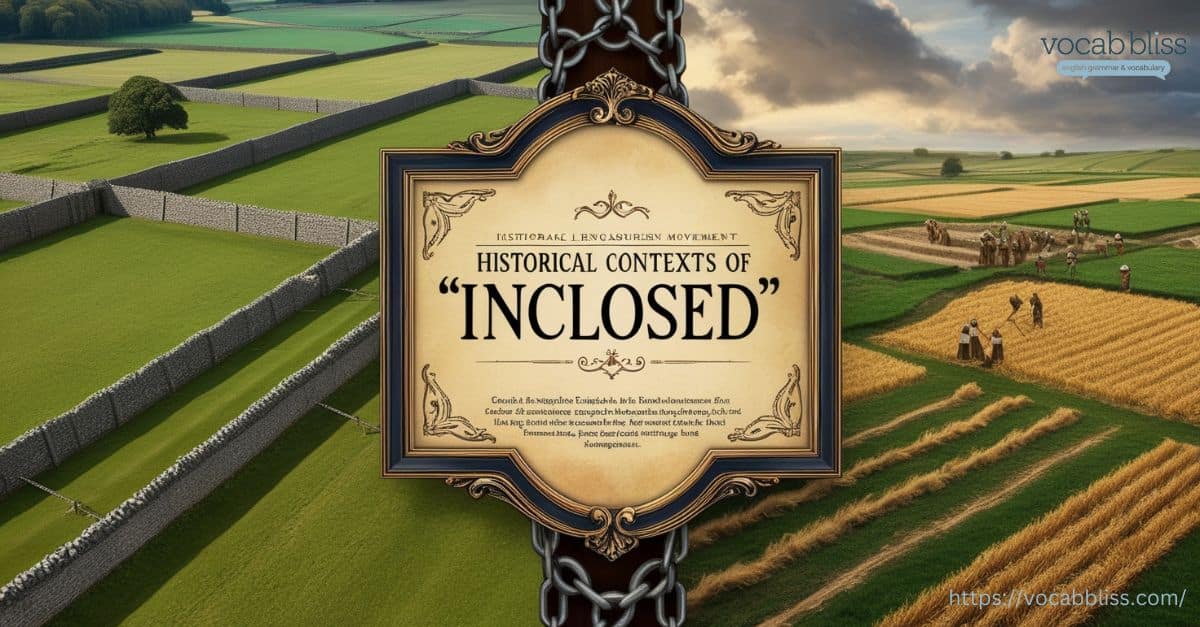
- Legal documents: “The parcel was inclosed within the estate boundary.”
- Land descriptions: “This property is inclosed by natural hedges.”
- Historical writings: “The treasures were carefully inclosed within a chest.”
Modern-Day Usage
In the modern world, inclosed is rarely used. It may still appear in historical reprints, specific legal jargon, or older documents preserved in archives. However, using inclosed in contemporary writing can confuse readers, as it is no longer a standard spelling.
Enclosed: Definition, Meaning, and Usage
Enclosed is the modern spelling, and people widely recognize it across all forms of English. The phrase means “contained within” or “surrounded by something” and appears in both formal and informal contexts.
How Enclosed is Used in Contemporary Writing
- Business correspondence: “Please find the enclosed documents for your review.”
- Personal communication: “I’ve enclosed a small gift for you in this package.”
- Legal and official documents: “The enclosed terms and conditions apply to this agreement.”
Examples in Context
- Formal usage: “Enclosed with this letter, you’ll find a copy of the contract.”
- Informal usage: “I enclosed a photo from last summer’s trip in the envelope.”
The spelling enclosed has become the go-to choice in modern English, ensuring clarity and professionalism in communication. It is versatile, accepted globally, and suitable for a wide range of writing styles.
Key Differences Between enclosed vs inclosed
Spelling Differences: US vs UK Influence
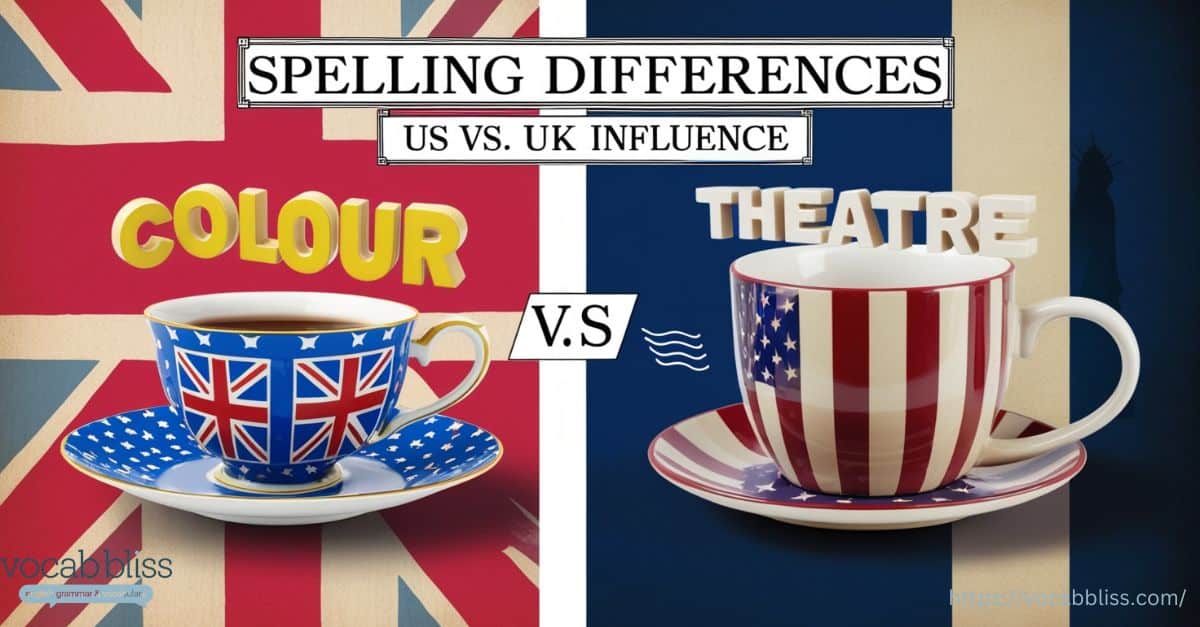
The preference for inclosed or enclosed transcends regional differences, as enclosed is now standard in both American and British English. Historically, inclosed was more common in older British English texts, but this variation faded by the 18th century. English speakers across all regions universally recognize and use “enclosed” as the preferred spelling in modern writing.
This version puts the subject (“English speakers”) at the beginning of the sentence and uses active verbs (“recognize” and “use”) to make the sentence more direct and engaging.
Contextual Differences
When Enclosed is Appropriate:
- Formal documents: “The enclosed contract outlines the terms of our agreement.”
- Business correspondence: “Please find the enclosed invoice for your records.”
- Everyday use: “I’ve enclosed a copy of the photo album for you.”
Inclosed Might Still Be Relevant:
- Historical references: “The estate was inclosed with a high stone wall.”
- Legal texts: Older legal documents or property records may still use the archaic spelling.
- Academic study: Researching historical linguistics or reading archival materials.
When to Use Each Word inclosed or enclosed
Choosing Between inclosed or enclosed Based on Context
Business Writing
In professional settings, enclosed is the standard choice. It conveys clarity and professionalism, making it appropriate for formal communication.
Example: “Please find the enclosed documents for your review.”
Formal Correspondence
When writing letters or official messages, use enclosed to indicate that something is included within the message or package.
- Example: “Enclosed with this letter, you’ll find a detailed report of the meeting.”
Legal or Historical Documents
Inclosed may occasionally appear in historical or legal documents written before the 18th century. In modern legal contexts, however, enclosed is preferred for its consistency and widespread recognition.
- Example (Historical): “The deed is inclosed with the attached papers.”
- Example (Modern): “The enclosed agreement must be signed and returned by the due date.”
Side-by-Side Comparison Table inclosed vs enclosed
| Aspect | Inclosed | Enclosed |
|---|---|---|
| Definition | Contained or surrounded within something (archaic) | Contained or surrounded within something (modern) |
| Usage | Rarely used today; found in older texts or legal documents | Commonly used in modern business, formal, and personal writing |
| Pronunciation | In-klohd (similar to “enclosed” but with an extra syllable) | En-klohd (standard modern pronunciation) |
| Examples | “The inclosed land was fenced in the 16th century.” | “The enclosed document must be signed by Friday.” |
| Prevalence | Obsolete in modern usage; appears in specific legal or historical contexts | Widely used in all types of formal and informal communication |
| Context | Used in historical writings, legal texts, or older property descriptions | Used in everyday business correspondence, formal letters, and emails |
| Regional Usage | Historically used in British English | Used universally in both American and British English |
This table highlights the key differences between inclosed or enclosed, illustrating how enclosed has replaced inclosed in most contexts today. Writers now largely limit “inclosed” to historical, legal, or academic contexts, while modern authors and professionals use “enclosed” as the standard spelling in contemporary writing.
Memory Aids to Differentiate inclosed or enclosed
- Think “E” for Everyday Use: The “e” in enclosed makes it easier to remember as the standard choice for modern contexts.
- Remember Archaic “I”: Inclosed starts with “I,” which you can link to “obsolete” or “infrequent” usage.
Examples of Everyday Usage
Here are some real-world examples to help you understand when to use enclosed:
- In business letters:
“Please find enclosed the required documents for your application.” - In legal documents:
“The enclosed contract must be signed and returned by the stated deadline.” - In emails:
“I’ve enclosed the project proposal as an attachment for your review.”

FAQs About enclosed or inclosed
- What’s the Difference Between Inclosed and Enclosed?
The main difference lies in their usage.Inclosed is an archaic form that people rarely use today, while enclosed is the modern, widely accepted spelling. - Is It Inclosed or Enclosed in Letters?
Always use enclosed in letters or emails for clarity and professionalism. - What Does Inclose Mean?
Inclose” is the older verb form of “enclose,” but it’s nearly obsolete. Use “enclose” instead. - Is It Enclosed Shoes or Inclosed Shoes?
Use enclosed shoes when referring to footwear that completely covers the foot. - Is It Inclosure or Enclosure?
Enclosure is the modern term, while “inclosure” is considered outdated. - What’s the difference between enclosed and closed?
Enclosed means that something contains or includes something else, while closed means that something is shut or not open.
Conclusion
In the debate between inclosed or enclosed, the answer is simple: choose enclosed for almost all purposes. It’s modern, clear, and universally recognized. Whether you write a letter, send an email, or prepare a formal document, enclosed ensures your communication stays professional and effective. If you’re interested in history or legal texts, you may still find inclosed relevant, but you should reserve it for specialized contexts. Always consider your audience and the expectations of modern communication standards. Now that you understand the difference between enclosed or inclosed, you can confidently choose the right term every time!

